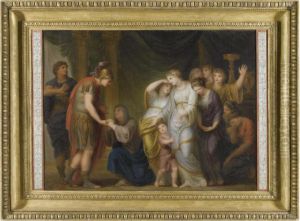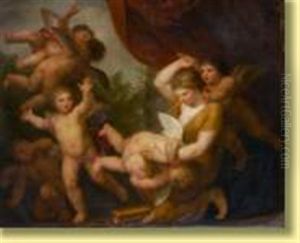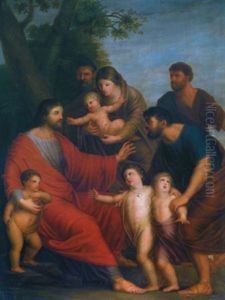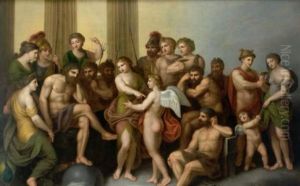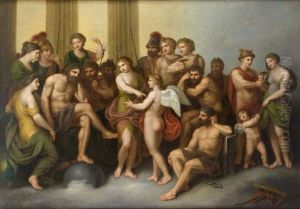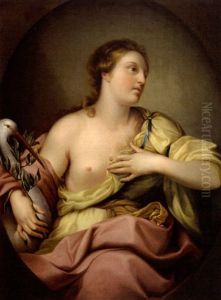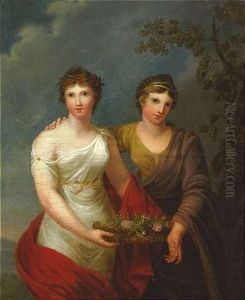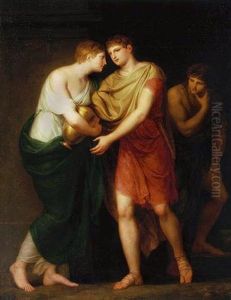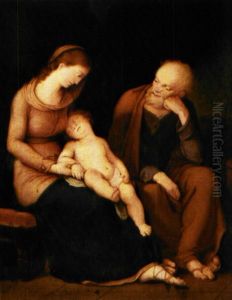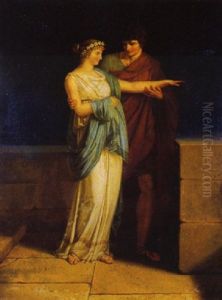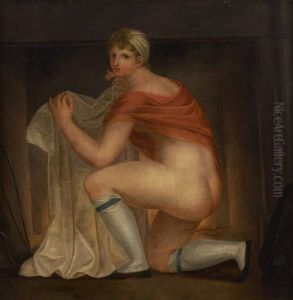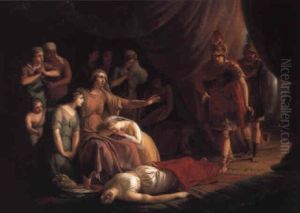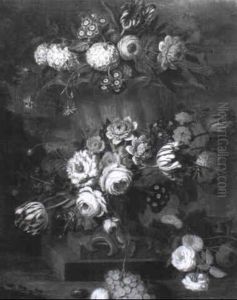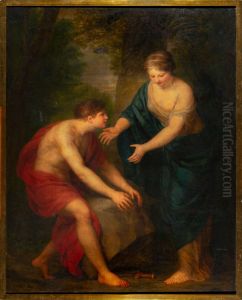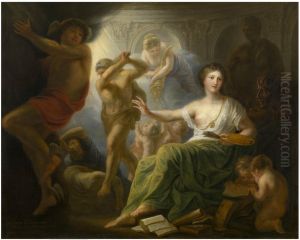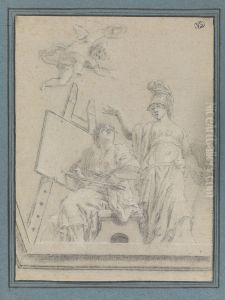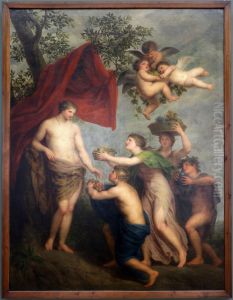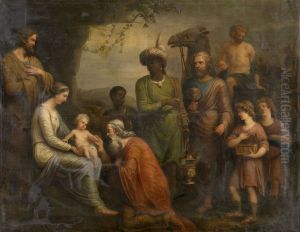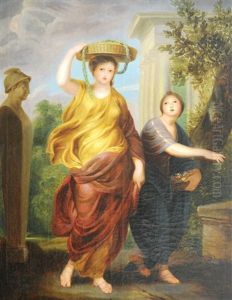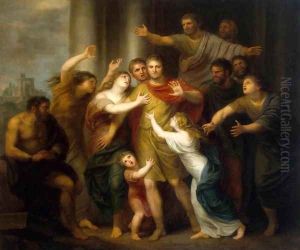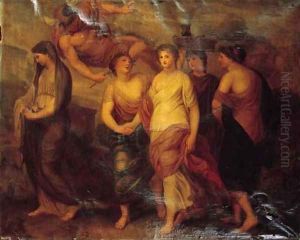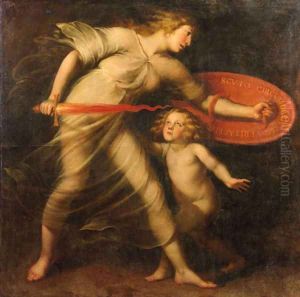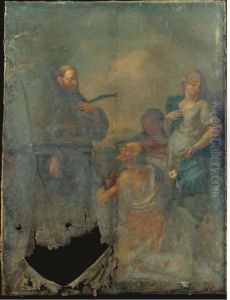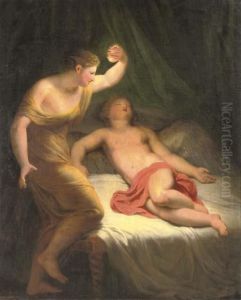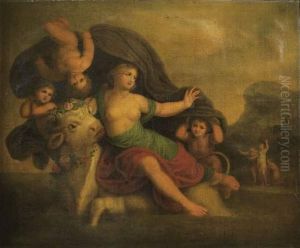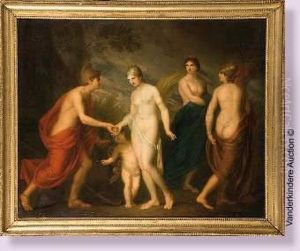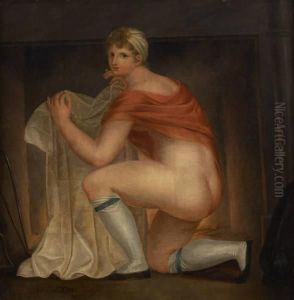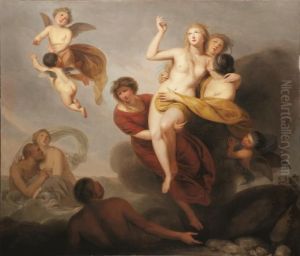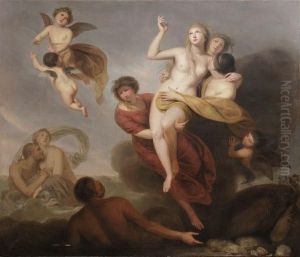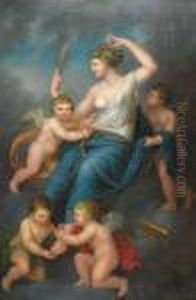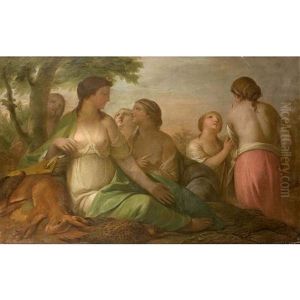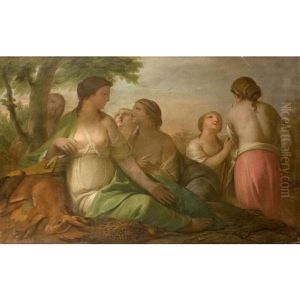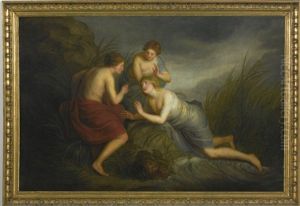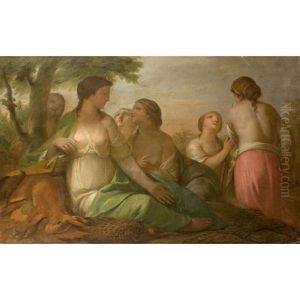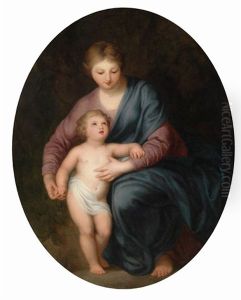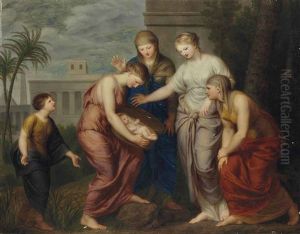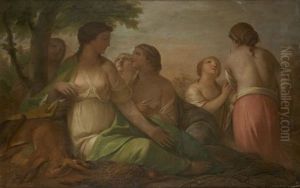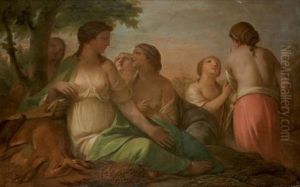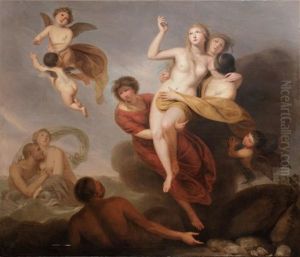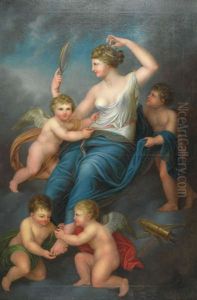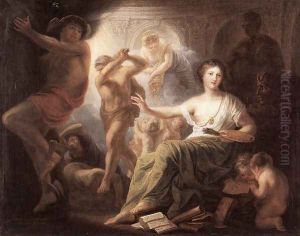Andries Cornelis Lens Paintings
Andries Cornelis Lens was a notable figure in the world of art, born on March 31, 1739, in Antwerp, Belgium. His journey into the arts began under the tutelage of his father, a lesser-known painter, which laid the foundation for his lifelong devotion to painting and drawing. Lens's early career was significantly influenced by his studies at the Academy of Fine Arts in Antwerp, where he honed his skills and developed a keen interest in the neoclassical style, which was gaining popularity across Europe at the time.
After completing his education, Lens sought to broaden his horizons and thus traveled to Paris, a vibrant hub for artists in the 18th century. His time in Paris was pivotal; he was exposed to the works of contemporary and classical artists, which deeply influenced his artistic direction. Lens's work began to reflect a unique blend of Flemish tradition and the emerging neoclassical ideals, characterized by clarity, harmony, and a profound respect for classical antiquity.
In 1763, Lens decided to move to Rome, further immersing himself in the study of classical art and antiquities. His years in Rome were productive; he created numerous drawings and paintings that echoed the grandeur and ethos of classical art. Lens's commitment to the neoclassical style was evident in his works, which often depicted scenes from ancient history and mythology with a fresh perspective while adhering to classical ideals of beauty and proportion.
Lens returned to Antwerp in 1770, where he became an influential figure in the local art scene. He was appointed as a professor at the Academy of Fine Arts in Antwerp, a position he used to advocate for the neoclassical style and to inspire a new generation of artists. His teaching and works played a crucial role in the revival of classical themes in Belgian art and helped establish Antwerp as a center of neoclassical art.
Throughout his career, Lens remained devoted to the ideals of neoclassicism, striving to capture the beauty and purity of the ancient world. His contributions to art were not limited to his own creations; he was also a mentor to many young artists who would carry forward the neoclassical tradition. Andries Cornelis Lens passed away on March 30, 1822, in Antwerp, but his legacy lives on through his influential works and his impact on the art world.
Lens's artistry is a testament to his skill, dedication, and the profound influence of classical antiquity on the neoclassical movement. His works are celebrated for their beauty, precision, and the seamless integration of classical themes with the artistic trends of his time.
